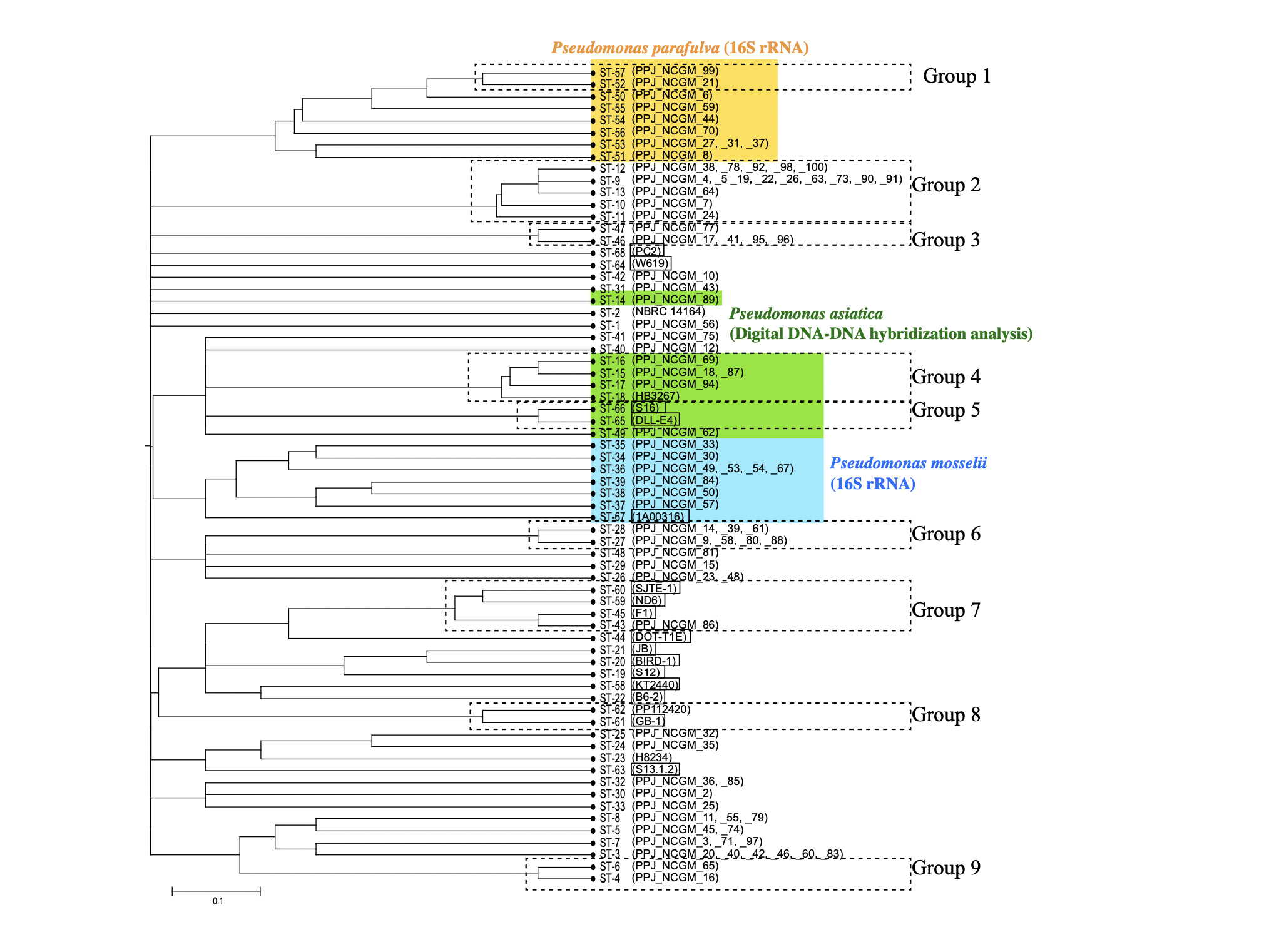Abstract:
Researchers at Kanazawa University describe in Scientific Reports the genetic typing of the bacterium Pseudomonas putida. The bacterium is normally not highly infectious but isolated from several clinical sites.
Pseudomonas putida is a bacterium occuring in soil, aquatic environments and plants. Although the virulence of Pseudomonas p. — the ability of the bacterium to infect its host and inflict a disease — is considered to be low, infection in severely ill patients can be lethal. P. putida strains (also called isolates) have been found in hospitals, e.g. in urine, blood or wound discharge from patients, and such clinical isolates have been found to display resistance to drugs. Now, Kohei Ogura from Kanazawa University and colleagues have performed gene sequencing for various P. putida isolates originating from both environmental and clinical sites.
Genetic typing of different P. putida strains enables to determine which are the more virulent ones. This is important because P. putida has high biotechnological value. Indeed, P. putida is a perfect microbiological platform for ‘metabolic engineering’, in which selected biochemical processes within the cells of an organism are stimulated so that the cells produce more of a particular substance. (Examples of metabolic engineering include the industrial production of beer, wine and cheese.)
The researchers applied a technique known as multilocus sequence typing (MLST), a method used in molecular biology for the genetic typing of more than one locus — a locus refers to the position on a chromosome where a specific gene is located.
The MLST technique is based on obtaining DNA sequences of several so-called ‘housekeeping genes’: genes that are needed for the maintenance of the basic functioning of a cell. In order to arrive at a valid MLST scheme, typically 100 isolates are required. Ogura and colleagues used 106 isolates, with 16 having an environmental origin and 90 coming from clinical sites. For the MLST scheme, the scientists used 8 housekeeping genes.
The scientists not only obtained the first MLST scheme for P. putida, they also were able to deduce that the studied bacterium isolates are clonal, meaning that they share common ancestry. At the same time, the researchers found that “our MLST scheme reflects the genetic diversity of P. putida group isolated from both clinical and environmental sites”.

Figure.
Tree of P. putida sequence types (STs). Squares indicate environmental isolates. Dash lines indicate clonal complex (relatively close ST types).
[Background]
Genotyping:
Genetic typing (genotyping) refers to detecting small genetic differences (i.e., differences in DNA) that can correspond to big changes in phenotype. These changes include both differences in physical appearance and differences associated with the origin of diseases.
Genotyping applies to all organisms, from humans to viruses and bacteria. Genotyping viruses and bacteria are helpful for understanding and controlling pathogens causing diseases.
Many methods exist to perform (partial) genotyping. Kohei Ogura from Kanazawa University used the multilocus sequence typing (MLST) method to obtain the genotype of the bacterium P. putida.
Article
A multilocus sequence typing scheme of Pseudomonas putida for clinical and environmental isolates
Journal: Scientific Reports
Authors: Kohei Ogura, Kayo Shimada & Tohru Miyoshi-Akiyama
DOI: 10.1038/s41598-019-50299-6
Funder
JSPS KAKENHI (18K07133); the Grant for International Health Research from the Ministry of Health, Labor and Welfare of Japan (30A1002); AMED (JP18fm0108001)



 PAGE TOP
PAGE TOP